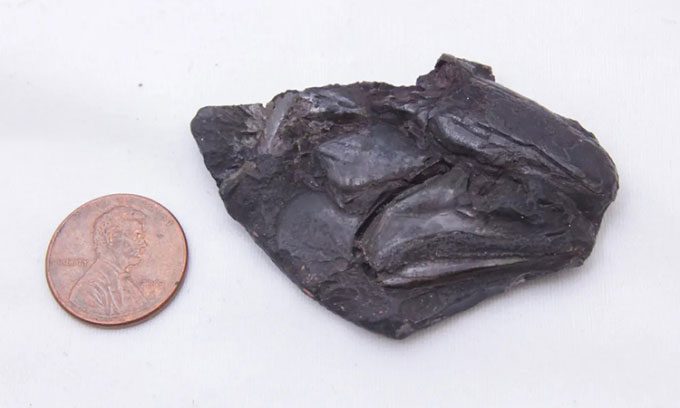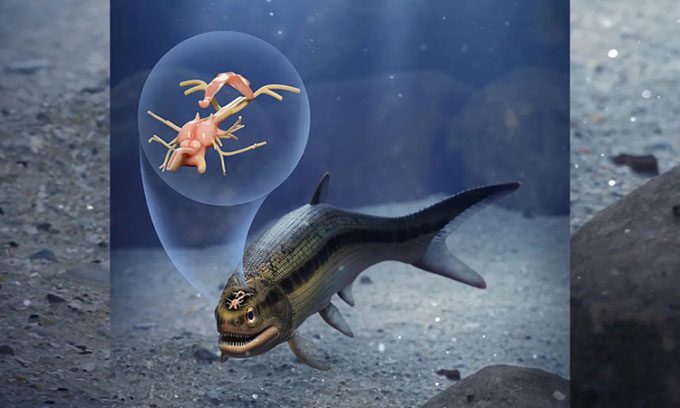A New Analysis of Prehistoric Fish Fossils Unearthed in England Reveals Brain and Cranial Nerves.
Nearly 100 years ago, a fossilized ray-finned fish was extracted from a coal mine in Lancashire, northwest England, but at the time, neither the excavation team nor the paleontologists recognized the true value of this discovery. Now, advanced computed tomography (CT scanning) technology has revealed that this specimen contains the oldest known brain of any vertebrate.

Fossil skull containing the 319 million-year-old brain of a ray-finned fish. (Photo: University of Michigan).
The fish in question is Coccocephalus wildi, which lived 319 million years ago. After a century of being overlooked, its remarkable brain was first described in a publication in the journal Nature on February 1, led by doctoral researcher Rodrigo Figueroa at the University of Michigan.
Soft tissues like the brain are “really very soft” and rarely fossilize well, but in the case of Coccocephalus, part of its brain and cranial nerves have been preserved to this day. This preservation is attributed to the skull not being crushed, and dense minerals quickly replacing the tissues, despite the fact that much of the hindbrain has been lost.
Without this preservation, the mentioned fossil would likely not have garnered much attention. It seemed to merely indicate a new species of ancient fish, about 15-20 cm long, which may have lived on a diet of crustaceans. Being the only known example of this species, the research team could not risk damaging the specimen, making CT scanning the only option to explore its internal structure. Nonetheless, the finding of a brain dating back 319 million years was unexpected.

Reconstruction of Coccocephalus wildi and its brain. (Photo: University of Michigan).
Instead of empty space or random mineral growth in the skull cavity, Figueroa and colleagues found a symmetrical structure with numerous pores resembling a living brain and nerve-like fibers.
“I told myself, ‘is this really a brain?’, so I zoomed in on that area of the skull to conduct a second scan at a higher resolution, and the results were very clear that what we were seeing was indeed accurate”, Figueroa recounted.
The brain of Coccocephalus is structured by swelling around a cavity and folding inward, similar to the brains of modern mammals, birds, and reptiles. In contrast, modern ray-finned fish—the closest living relatives of Coccocephalus—have brains that fold outward. This suggests that fish brains underwent a significant change at some point, although the research team is unsure when or why this occurred.
“This small fossil, with an unimpressive exterior, not only reveals the oldest example of a vertebrate brain but also compels us to rethink the evolution of brain structures in living organisms”, Figueroa added.
The lead author of the study anticipates that as CT scanning becomes more accessible, many more fossilized brains will be imaged in this way. This new discovery is sure to motivate scientists to pursue such investigations.





















































